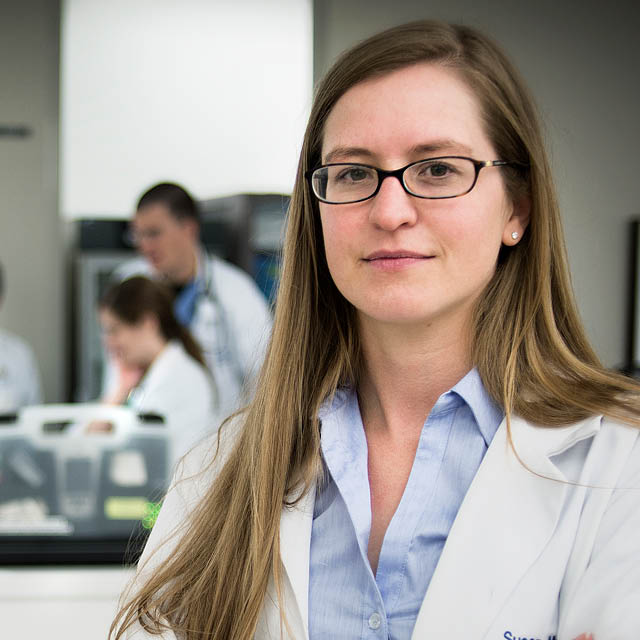
June 21, 2018

Pamela Johnson
Pamela Johnson says she was the type of kid who loved science and always knew she was going to be a doctor. Susan Peterson did too, but spent her undergraduate years studying the value aspects of medicine and health care management. About two years ago, the two joined forces to co-direct a new concept at Johns Hopkins: the High Value Practice Alliance.
The multispecialty group, which grew out of the Graduate Medical Education Committee, was formed in 2015 to engage students and residents in quality improvement work designed to reduce unnecessary tests and treatments. The projects are largely multidisciplinary.
“I’m a radiologist, but if I observe areas where patients are not benefitting from imaging and want to reduce utilization, I can’t do it myself,” says Johnson, vice chair of quality and safety for the Department of Radiology and one of the physician leads of the Johns Hopkins Health System High Value Care Committee. “It has to be a team effort.”
The work quickly took off, she says, with their committee amassing support from some 30 faculty members in departments as varied as surgery, neurology and anesthesiology and critical care medicine. Johnson has subsequently observed systemwide growth of these types of initiatives, sparked by the creation of the Health System High Value Care Committee in 2016 by Redonda Miller, Johns Hopkins Hospital president, and Renee Demski, JHH vice president of quality. “It was like you had this pile of kindling wood and a match,” says Johnson. “These providers are really very passionate about what they’re doing. The creation of this committee further legitimized their work and empowered them.”
Critiques of health care frequently note that a big component of the high expense is unnecessary practice, so in addition to reducing costs of care for patients, Johnson wants to help build trust between patients and providers by informing patients about the work being done at Johns Hopkins and other institutions across the country. She’d also like to see physicians have more of a say in which quality measures to track.
“We’re really trying to make changes in practice from a quality-driven approach, and that’s how it has to be,” Johnson says. “It can’t be driven by cost; it has to be driven by quality, but the costs will follow.” Engaging the housestaff in this work is the best way to ingrain high-value care principles into their future practice, she adds.

Susan Peterson
In one such quality improvement project, emergency medicine residents determined that coagulation studies were not helpful in caring for patients with chest pain. By adding a pop-up message in the electronic health record questioning why a physician was ordering coagulation studies, they reduced use of the test, with an estimated savings of $50,000. “It shows how powerful some of these things can be,” says Peterson, associate medical director for patient safety and quality in the Department of Emergency Medicine.
Johnson received her bachelor’s degree in biology from Harvard University and medical degree from Jefferson Medical College. She completed a residency in radiology at Johns Hopkins and joined the faculty in 2001 from Thomas Jefferson University Hospital.
Peterson holds a bachelor’s degree in health and societies from the University of Pennsylvania. Following medical school at Johns Hopkins, she stayed on for a residency in emergency medicine and clinical research fellowship. Peterson joined the Johns Hopkins faculty in 2013.

